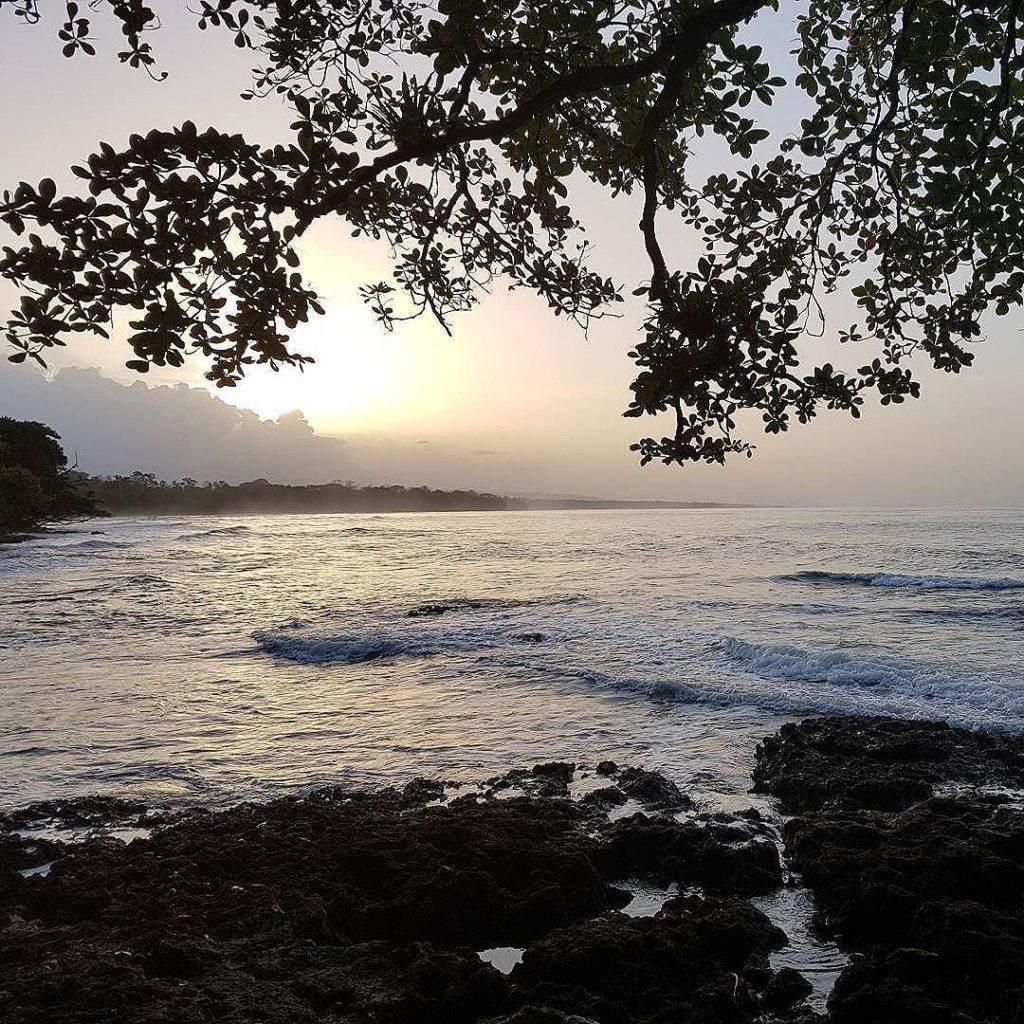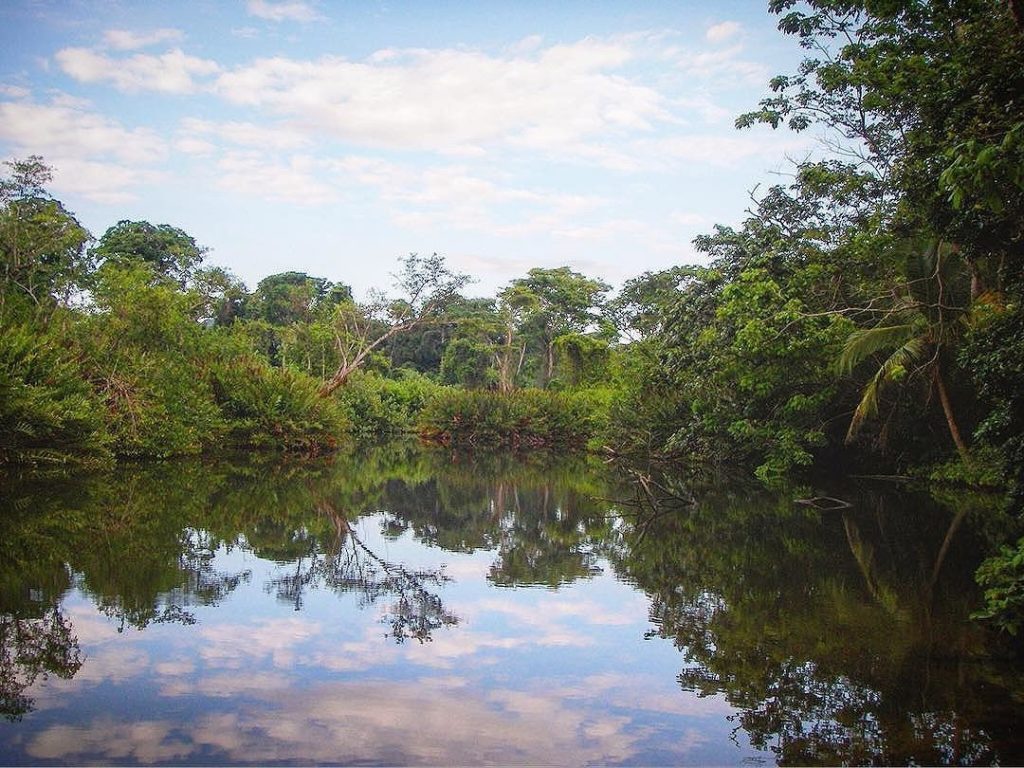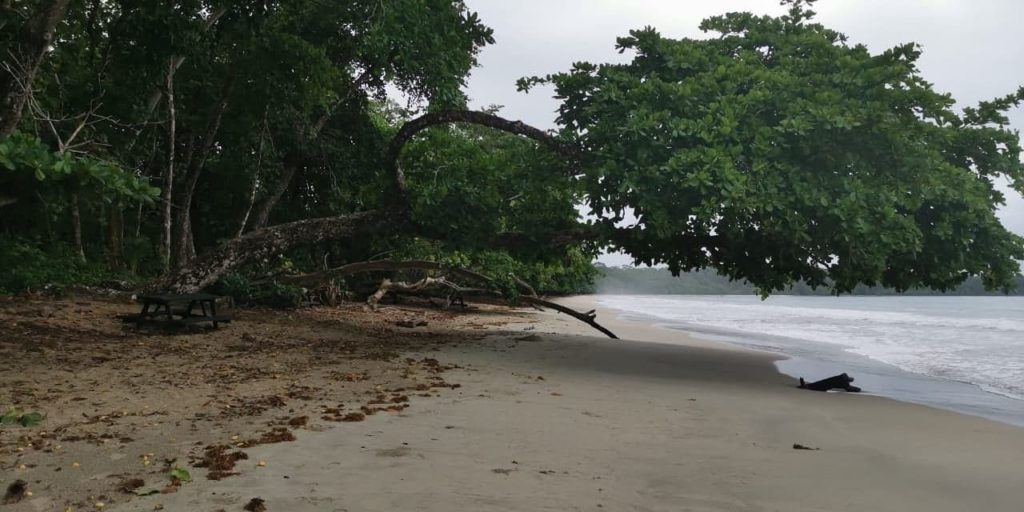Park Info
Playa Blanca sector:
Every day from 6 a.m. to 5 p.m.
Puerto Vargas sector:
Every day from 8 a.m. to 4 p.m.
Cahuita National Park is unique in Costa Rica for its close relationship with the community, an example of shared management between the community and government for sustainable development at a community level. Participation of park guards and community life stands out through shared governance management.
Know the best-preserved coral reef in the Costa Rican Caribbean area and enjoy the scenery, culture, and cuisine offered in the area.
White sand beaches, turquoise sea, and diverse marine life are some of the attractions that await you in Cahuita National Park in the province of Limon.

In this ecosystem, nestled in the Caribbean but with a forest environment, you will find species such as raccoons, sloths, iguanas, and basilisks. You will also notice snakes like tinsel and tamagá, and birds like the black hawk.
Inside the park, it is possible to perform recreational sports and hike the trails, or simply enjoy the beaches swimming or sunbathing.
The park has the support of guides and tour operators of the community who have been trained by the National Training Institute (INA) and are accredited by the Costa Rican Tourism Institute (ICT) to provide guidance and service to visitors.

Historical Overview of Cahuita National Park and its community
The first settlers of Cahuita came in the first half of the eighteenth century, attracted by the coral reef, which years ago was the site feed and shelter for large groups of green turtles (Chelonia mydas) and hawksbill (Eretmochelys imbricata). These were highly prized by indigenous and black people, who rowboats and sailboats, sailing to the area from Bocas del Toro and from the coast of Nicaragua.
The family of Mr. William Smith was the first to be established in 1828 on the site today called “Punta Cahuita”. For many years these early settlers planted products such as yams, cassava, cocoa, and coconut and raised ranches with floors and walls built with Maquenque palm (Socratea durissima) and ceilings of pressed leaves.
In 1915 during the government of President Alfredo Gonzales Flores the present town of Cahuita was founded. The president, in gratitude to the people for the help received during the sinking of his ship, donates a land where it is demarcated in the new town.
By this time the main economic activity of subsistence developed. The settlers of Cahuita were planting cocoa and fishing, but due to the fall in prices of this product and diseases that attacked crops, its inhabitants were forced to initiate new livelihoods as logging and livestock.
With this panorama in 1970, Cahuita National Monument was created to protect the coral reef and in 1978 it was declared a National Park. It was one of the first national parks created in the country for the conservation of nature and the benefit of all Costa Ricans and visitors.
The community of Cahuita has devoted great efforts to the conservation of this National Park since its creation. That is why in 1998 the Management Committee of Cahuita National Park, made up of members of local organizations, and representatives of SINAC was constituted. This committee develops actions for the conservation and sustainable use of various ecosystems of the park, making important community development contributions.
Cultural Riches
In the eighteenth century, with the arrival of African descent cultural links between different ethnic groups from Africa and Jamaica, were created. Leaving as a legacy customs and traditions such as architecture that clearly shows how the Jamaican style is to build houses on stilts, painted with bright colors.
Caribbean cuisine is known for using typical ingredients of the region, such as coconut milk, to prepare the famous Caribbean Rice & Beans or the unique” Rondón”, in addition to the known” Patí a meat pie of pastry, with spices and hot pepper. Among his dishes also stands the “Plantinta” (plantain tart), and “Pan Bon”.
Calypso music began to be listened to in the Caribbean area of Costa Rica in 1870 when people arrived, black ethnicity, from Jamaican Islands, Barbados, and Saint Kitts. Since then the community of Limón has been creating and playing calypso music and rhyming in those melodies. The name given to the calypso singer-songwriters in Limón is calypsonians, which has as meaning “a person who gossips, recycles rumors and transmits the news while positively resists the ravages of the colonialists in the nineteenth and twentieth centuries. (Monestel, M. 1993).


Natural Riches
At Cahuita National Park on its 1067.9 hectares of land is conserved a large sample of flooded tropical rainforest. The marine area at 600 of its 22,400 hectares protected the most developed coral reef of the Caribbean coast of Costa Rica.
The name Cahuita comes from the terms “Kawe” which means “Sangrillo” (local tree) and “Ta” which means “tip”, i.e. “Punta Sangrillo”. It has 23.290 hectares of marine coverage and 1.102 terrestrial coverage. In this area, there is a set of ecological systems such as coral reefs, that, due its structure and diversity, are considered the most developed ecosystem of the Costa Rican Caribbean area (Jiménez, et. Al. 2011).
Attractions
White sand beaches with safe areas for bathers enjoyment where you can perform beach activities.
Coral reef, with areas designed for snorkeling, where you can see a great variety of fishes and coral-developed coral structures, where stands out cerebriform coral, elkhorn coral, sea fan, french angelfish, queen angelfish, Isabelita fish, cucumber sea, lobsters, and turtles.
Trails along the coast where you can see: howler monkeys, white-faced monkeys, sloths, toucans, coatis, trogon, night heron, tinsel snakes, black hawks, and basilisks.
Services
We have toilets, showers and changing rooms, drinking water, information services, trained local guides, community lifeguards, and picnic areas.
Parking in Sector Puerto Vargas.
Recommended
- To enhance your experience it is recommended to hire a local guide.
- Staying on the trails, use comfortable clothes for walking, biodegradable sunscreen, and insect repellent.
- Take care of your belongings.
- Do not stand on corals.
- Remember that the entry of pets, alcoholic beverages, weapons of any kind are not allowed, as well as drug substances.
Prices
If you enter by Playa Blanca entrance, adjacent to the town of Cahuita, the fee is a voluntary contribution, in cash. Which will be invested in the community of Cahuita National Park.
If you enter the Puerto Vargas sector, non-resident foreigners pay $5 and domestic residents pay ¢1,000 colones.